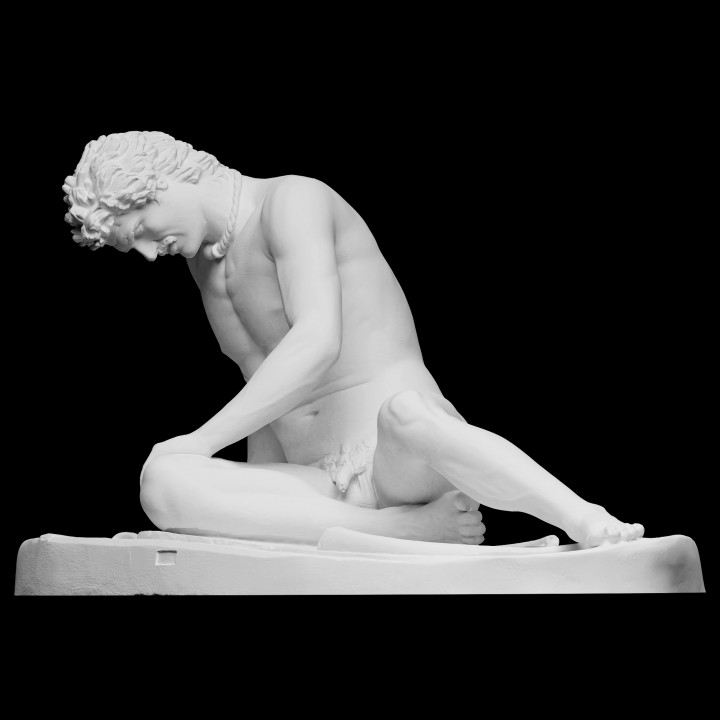
Dying Gaul
myminifactory
This plaster replica was acquired in 1904 from an antique Roman copy of a now lost Greek, Hellenistic statue dating back to around 241-197 BC. The original Greek sculpture may have been situated at the Pergamon Altar. Michelangelo Buonarotti restored the right arm of this work. Commissioned most likely by Attalus I of Pergamon to commemorate his victory over the Galatians, a Celtic or Gaulish people inhabiting parts of Anatolia (now Turkey), the original sculpture was created by an unknown artist. Epigonus, a court sculptor of the Attalid dynasty of Pergamon, is suggested as the possible creator. Known commonly as The Dying Gladiator until the 20th century, this copy was believed to depict a wounded gladiator in a Roman amphitheatre. Scholars had identified it as a Gaul or Galatian by the mid-19th century, but it took many decades for the new title to gain widespread acceptance. This statue serves as both a reminder of the Celts' defeat and a testament to their bravery as worthy adversaries. It may also provide evidence to corroborate ancient accounts of fighting styles. Diodorus Siculus reported that "Some of them have iron breastplates or chainmail while others fight naked." Polybius wrote an evocative account of Galatian tactics against a Roman army at the Battle of Telamon of 225 BC: The Insubres and the Boii wore trousers and light cloaks, but the Gaesatae, in their love of glory and defiant spirit, had thrown off their garments and taken up their position in front of the whole army naked and wearing nothing but their arms... The appearance of these naked warriors was a terrifying spectacle, for they were all men of splendid physique and in the prime of life.
With this file you will be able to print Dying Gaul with your 3D printer. Click on the button and save the file on your computer to work, edit or customize your design. You can also find more 3D designs for printers on Dying Gaul.
